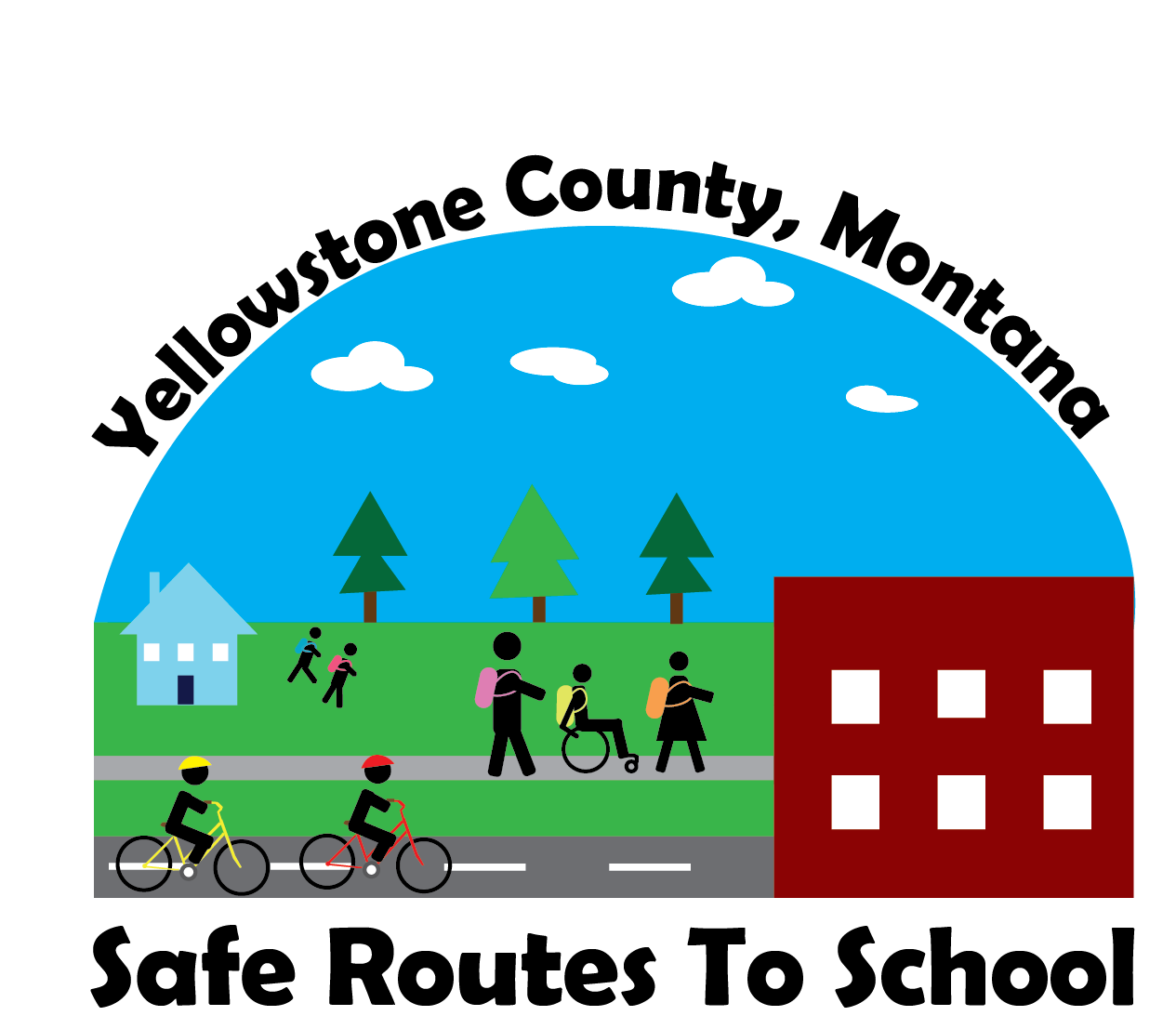In this blog post we are highlighting Yellowstone County, Montana’s active WSB program! Morgan Miller, a Prevention Health Specialist in the public health department at RiverStone Health, works as the Safe Routes to School Committee convener. In this role, Morgan works to bring together community partners to move Safe Routes work forward in Yellowstone County, to provide technical assistance to their two WSB schools, and to help make sure the programs run smoothly. The WSB program kicked off in the fall of 2019, and is currently taking a break for the winter months but will soon be back in action in Spring 2020. Two elementary schools take part in the WSB program, Highland and McKinley, with around 20 students who participate and eight volunteers spread between both programs.
Check out Yellowstone County’s Walking School Bus program details:
How frequently throughout the school year does your WSB meet, and how did you decide on that? — Both of our WSB programs operate in fall and spring. Highland WSB meets once a week on Fridays and McKinley WSB functions Monday through Friday. Each school decided the frequency that was best due to volunteer availability and student participation. Both schools wanted to be consistent so students and families could get familiar with the program and make it part of their lifestyle.
What inspired you to start or participate in a WSB? — Our WSB programs were naturally a community-based initiative. In 2016, our health department conducted Safe Routes to School audits of 10 elementary schools in Yellowstone County. These audits focused on schools with higher percentages of students who receive free or reduced-price lunches. The data from the audits were compiled into school-specific reports and helped to start conversations with the schools for how they could improve walking and biking for their students. WSBs were one strategy that PTAs and principals were excited about. Highland and McKinley Elementary Schools had discussed this idea with other community partners as well, so they were brought to the Safe Routes to School Committee table and the two WSBs were formed!
Do you have any ways you engage kids to participate in the WSB more frequently, such as awards for kids who walk the most miles? — With a grant from our local United Way, we were able to purchase a software license called “Active4.me” to use for each schools’ WSB. Students receive a barcode scan tag which is scanned when they arrive at school. The software then tallies the number of trips and miles walked, and gives students virtual badges when they reach certain milestones. With this same grant, we are currently planning some fun student challenges and prizes for the spring!
Have you faced any challenges in your WSB program, such as parents fearing for their child's safety and not allowing them to participate? How did you, or how are you currently, working through that challenge — Everyone we talk to about the initiative seems very interested and thinks it is a great idea. The problem we run into is getting people to change their habits or schedules to try this out – volunteers and families alike. Mornings can be hectic and it may be hard to change a routine, especially when adults need to be at work by 8am. We also started our program in the fall, which was a busy time with the start of school! When we replicate these programs at other schools, we might try implementing in the spring when students and families are more used to their schedules and the busyness of school.
We originally wanted to walk through the winter, however, the cold weather was a bit extreme this fall and discouraged many families from participating. As a result, schools decided to pause the WSBs so that they can relaunch with renewed energy in spring.
Do you have an inspiring story that shows how powerful a WSB can be for youth? — Not yet - we hope to collect more feedback in the spring.
What other special facts would you like to share about your WSB program? — This effort is also part of a larger Safer Routes to Schools initiative, which includes route signage and educational materials at select schools. These initiatives would not be possible without the collaboration of great community partners! Local advocates, Billings Public School District # 2 principals, United Way of Yellowstone County, City of Billings, Healthy By Design Coalition, and RiverStone Health have been essential to the planning and implementation of these efforts – as well as our WSB Coordinators, volunteers, students and families who are the heart of the WSB programs.
In Yellowstone County, a diverse representation of community members are coming together to make walking and bicycling to school a safe and easy method of transportation. Fewer automobiles around the school grounds, increased social connection physical activity, and time outdoors; and improved community partnerships are just some of the direct benefits the Yellowstone County WSB program is providing the community. The benefits not only reach the participants of the WSB, but spread across the community, providing improved air quality thanks to cleaner forms of transportation, higher grades and increased student attentiveness. These also benefit citizens who may not walk or bicycle to school, but who still use sidewalks or commute by bicycle, thanks to the awareness the walking school bus program brings to public transportation and the built environment.
Join me in congratulating Yellowstone County for providing such a fantastic service to its community! If you would like more information, or would like to join or volunteer for the WSB program in Yellowstone County, check out the Billings Public Schools Transportation Department page which has links to both Highland and McKinley Elementary Schools’ WSB information.


